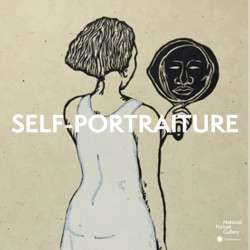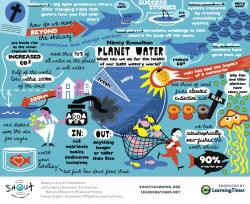Nicole Lambertson's collections
Explore: Mask Design
<p>In this collection, explore the history, evolution, and meaning of masks through multiple perspectives. <a href="https://pz.harvard.edu/">Harvard Project Zero Thinking Routines</a> are included at the end to help guide discussion and reflection of design choices, local and global impact, and ways that masks protect and conceal the wearer. </p>
<p><u>Suggested instructions for use</u>: This collection was designed to be modular and a survey of the masks available at the Smithsonian. Each section begins with an essential question, followed by several masks that help explore the key concept. Teachers may facilitate Project Zero Thinking Routines before and/or after students look closely at each section. Students may want to jot down notes in response to the essential question in preparation for a group discussion.</p>
<p>Additional questions to guide investigation:</p>
<ul><li>How does belief shape our response to worldly concerns?</li><li>How does the body's needs and shape dictate the designs we create?</li><li>How does new knowledge change our decisions? What "old" knowledge gets carried forward and why?</li><li>Where are we vulnerable in our bodies?</li></ul>
<p>This collection was created in collaboration by:</p>
<ul><li>Elizabeth Dale-Deines, <a href="https://learninglab.si.edu/profile/673">Smithsonian American Art Museum</a></li><li>Alexa Griffith, <a href="https://learninglab.si.edu/org/cooperhewitt">Cooper Hewitt, Smithsonian Design Museum</a></li><li>Ashley Naranjo, <a href="https://learninglab.si.edu/org/sclda">Smithsonian Center for Learning and Digital Access</a></li><li>Diana N'Diaye, <a href="https://folklife.si.edu/">Center for Folklife and Cultural Heritage</a></li><li>Stephanie Norby, <a href="https://learninglab.si.edu/org/sclda">Smithsonian Center for Learning and Digital Access</a> </li><li>Katherine Ott, <a href="https://learninglab.si.edu/org/americanhistory">National Museum of American History</a></li><li>Tess Porter, <a href="https://learninglab.si.edu/org/sclda">Smithsonian Center for Learning and Digital Access</a></li><li>Emily Szasz, <a href="https://learninglab.si.edu/org/cooperhewitt">Cooper Hewitt, Smithsonian Design Museum</a></li></ul>
<p>To read more about the research process the team used in creating this collection, please visit the supplementary Smithsonian Learning Lab <a href="https://learninglab.si.edu/news/a-survey-of-masks-at-the-smithsonian" target="_blank">blog post</a>.</p>
<p>Keywords: cfch, chsdm, nmah, saam, sclda, ppe, face covering, protection, design, making, community, fashion, production, identity, inquiry, art, culture, medicine, science<br></p>
 Nicole Lambertson
Nicole Lambertson
73
The Earth: A Mini-Unit of Geography and History
<p>This activity introduces plate tectonics, volcanoes, earthquakes, rocks, and fossils through Smithsonian activities supplemented with additional materials. The sorting activities (see pink and white tile at the end of the collection) allow students to sort rocks and fossils based on age. At the end of the activity, students will be able to think critically about how cities prepare for volcanoes and earthquakes.</p>
<p><strong><u>STUDENT INSTRUCTIONS:</u></strong></p>
<p>If there is a paperclip on the left side of the slide, click on it and follow instructions.
</p>
<p><em>Tags: archaeology, anthropology, margins, subduction, hotspot, oceanic, crust, continental, rift, transform, shield, spreading, ridge, trench</em></p>
<p><em></em></p>
 Nicole Lambertson
Nicole Lambertson
11
Self-Portraiture: How do Portraits Reveal and Conceal?
<p>Explore self-portraiture from the colonial era to the 21st century by analyzing a wide range of mediums highlighting identity. Utilize this collection to consider how artists reveal and conceal their identity and how self-portraits raise important questions about self-perception and self-reflection.</p>
<p>#NPGteach</p>
<p>Keywords: Self-portrait, Artist, Identity, Portrayal, Symbols, Self-Perception, Self-Reflection</p>
 Nicole Lambertson
Nicole Lambertson
64



